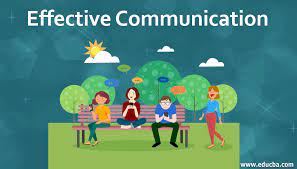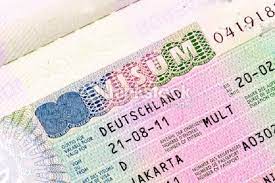
Written communication has been the primary means of sharing information since the advent of writing itself. Despite the advent of electronic communication, the importance of written communication will never wane because it serves unique purposes that other forms of communication cannot serve as well.
Written communication can be very powerful when used correctly, but it has its limitations as well. In some situations, email or other written forms of communication might not be the best approach, or they may be greatly enhanced by physical or in-person meetings, phone calls or video conferences.
Here are a few situations when written communication can be helpful and when it might fall short of your needs.In this article, we’ll discuss both the advantages and limitations of written communication so you can make an informed decision as to whether it’s right for you or your business in any given circumstance.
Advantages of Written Communication
While it is not as effective as in-person communication, written communication still has many advantages. It allows you to have time to think about what you want to say before you actually say it; this may prevent embarrassing moments.
Written messages are also generally easier to read, which means that they're easier for the recipient to understand. This can be especially helpful if they lack fluency in your language. They may need more time to process a written message than an oral one because their brain will be working harder to translate it into words and sentences.
There are some drawbacks too, though. You can't use physical gestures or eye contact when you're writing, so recipients might feel less engaged with you than they would if they were talking face-to-face.
On the other hand, people who send a lot of text messages typically get quicker responses than people who talk on the phone. One disadvantage of written communication is that while you're composing a message on paper or on screen, you lose spontaneity and urgency--both important qualities in personal conversations.
Limitations of Written Communication
Written communication is a powerful tool that can be used to clarify thoughts, share ideas, convey emotions, and persuade people. However, it has limitations. These include the lack of non-verbal cues such as facial expressions or tone of voice. It also lacks personal contact with the person you're communicating with which can lead to misunderstandings.
Additionally, there are no pauses in written communications so when reading, the reader cannot detect how long they should take to read before continuing. The reader may become confused because there are no spaces between words and they may get lost in trying to decipher individual words on their own rather than reading fluently through sentences.
In addition, written communications lack gestures and body language that help us understand other's feelings. When someone does not have time to read an entire text, they may overlook important information if it is near the end.
Finally, if someone isn't familiar with your particular style of writing--whether its formal or informal--they might not understand what you're trying to say even though your message was clear to you. Another limitation of written communication is the lack of feedback and conversations that occur face-to-face.
Though this form of communication can sometimes be frustrating, it has its advantages too. For example, this type of communcation allows for quick responses since it doesn't require sending out a separate email to each recipient.
The Importance of Clarity and Conciseness
The power of written communication lies in its ability to convey complex ideas and messages. However, when written communication is unclear or overly wordy, it can make the idea difficult to understand and hard to follow.
Conciseness and clarity are important for effective written communication. You should use short sentences with clear language that is easy to read. Conciseness will help your message stand out and get your point across quickly so that people don't get bored reading long-winded explanations.
A lack of conciseness can result in being misunderstood by the reader because they might not remember what you said on a previous page. They might think you're saying something else instead of what you actually meant to say. For example, if you have a paragraph about taxes that uses vague language like income tax, this could be confusing to readers.
If you change this to taxes from earned income then readers will know more clearly what you mean. Conciseness also makes things easier for readers because it gives them less material to process, which helps them stay focused on the content of your writing and avoid getting distracted by other thoughts.
The Role of Tone in Written Communication
Tone plays a huge role in written communication. Tone can be conveyed through words, symbols, or images. Tone can also be hidden with sarcasm or irony that the reader may not realize until they think about it more. Regardless of how tone is communicated, it is important to be aware of your tone in order to have a positive impact on your reader.
The tone you use in writing should reflect the context of your message, who you are communicating with, and the purpose for which you are communicating. For example, if you want to convey humor, then choose an appropriate wording as well as an emoticon to represent this message.
The Effectiveness of Grammar and Spelling
Grammar and spelling are important to the effectiveness of written communication. When you communicate with people, they will make judgments about your intelligence, honesty, and credibility based on what you say and how you say it.
If your writing is littered with errors or is difficult to understand because of a lack of punctuation or capitalization, your readers may become confused and frustrated.
They might also decide that you don't know how to speak properly or can't think clearly. On the other hand, if your grammar and spelling are perfect, your readers might be impressed by your intellect or think that you are professional.
Summary
Written communication is one of the most powerful tools for reaching a large audience. With so many people in the world, it can be difficult to get your message heard without using written language.
The power of written communication has both advantages and limitations. On one hand, it can reach a broad audience much more easily than spoken word.
On the other hand, it cannot convey facial expressions or tone as effectively as spoken word. Still, when used well, writing is an effective tool for communicating with others.




















